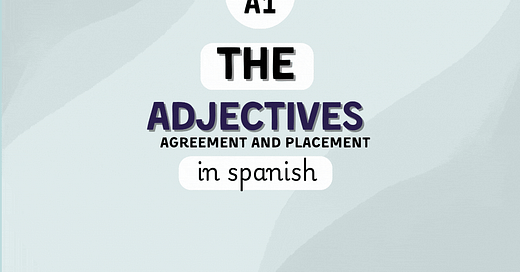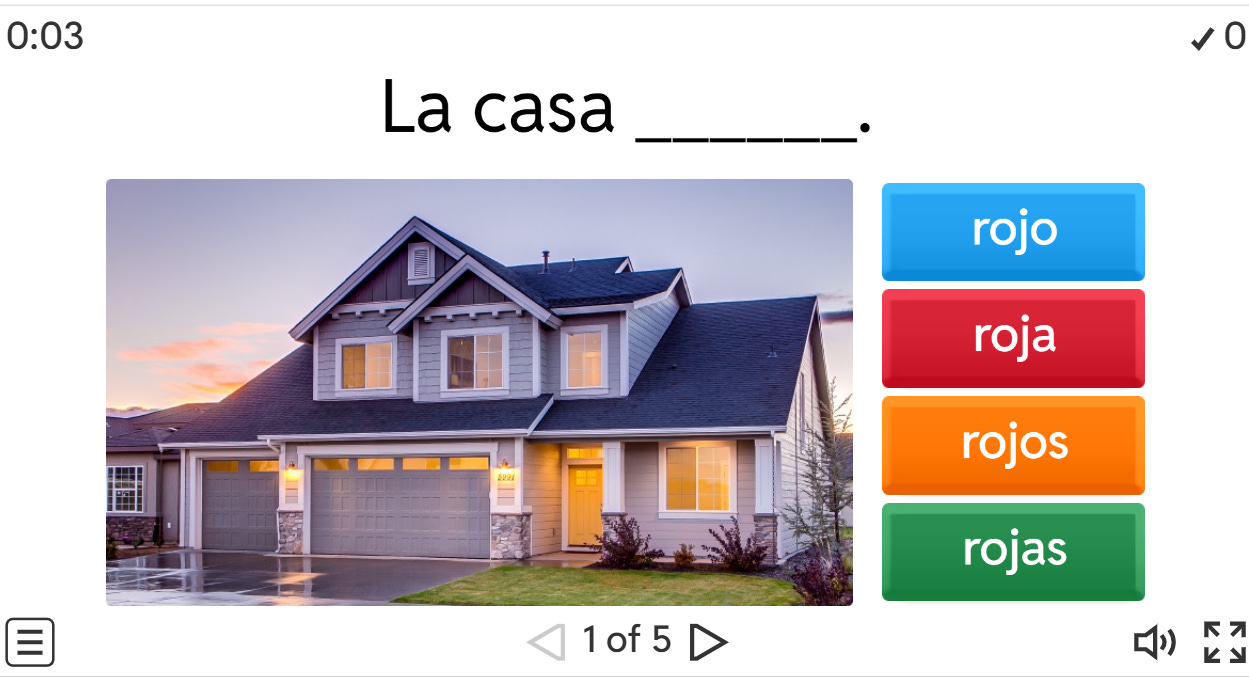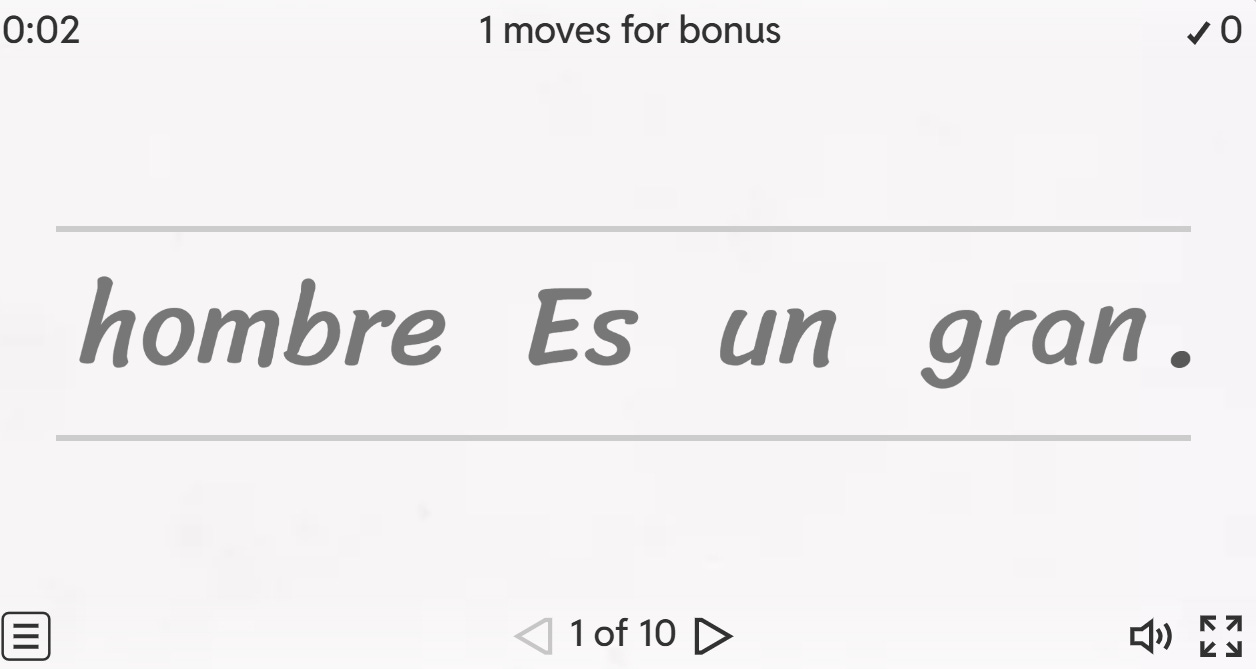Using Adjectives in Spanish: Agreement and Placement
Adjectives play a key role in Spanish grammar, helping to describe nouns in a way that adds detail and meaning. However, unlike in English, Spanish adjectives must agree in gender and number with the noun they modify. In this post, we’ll break down how adjective agreement works, where adjectives are placed in a sentence, and provide interactive games to reinforce your learning.
1. Understanding Adjective Agreement
In Spanish, adjectives must match the noun they describe in gender (masculine or feminine) and number (singular or plural).
Masculine singular: El coche rojo. (The red car.)
Feminine singular: La casa roja. (The red house.)
Masculine plural: Los coches rojos. (The red cars.)
Feminine plural: Las casas rojas. (The red houses.)
2. Placement of Adjectives in Spanish
Unlike English, where adjectives usually come before the noun, in Spanish, most adjectives come after the noun.
✅ La ciudad bonita (The beautiful city)
❌ La bonita ciudad (Correct in some cases but less common)
However, some adjectives can come before the noun, often changing their meaning:
Un gran hombre (A great man) vs. Un hombre grande (A big man)
Pobre niño (Poor/unfortunate child) vs. Niño pobre (Child who is poor financially
3. Common Irregular Adjectives
Some adjectives don’t follow regular agreement rules and have unique forms:
Test your knowledge with this interactive Wordwall quiz:
🔗 Wordwall: Spanish Adjective Agreement
Drag and drop the adjectives into the correct position!
🔗 Wordwall: Adjective Placement
😊 Here are some of the most common adjectives in Spanish to practice:
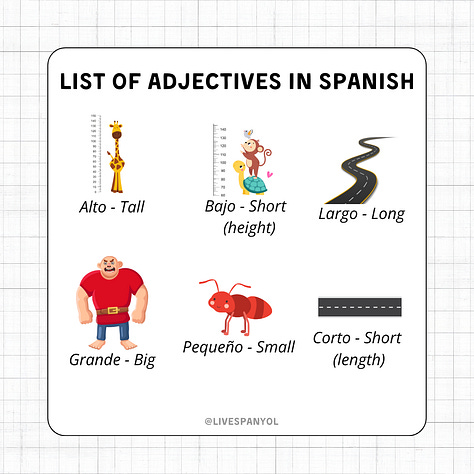
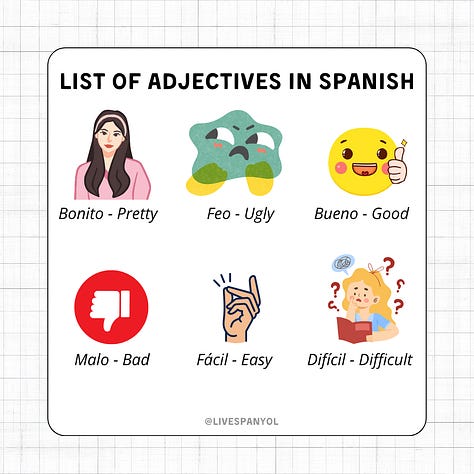
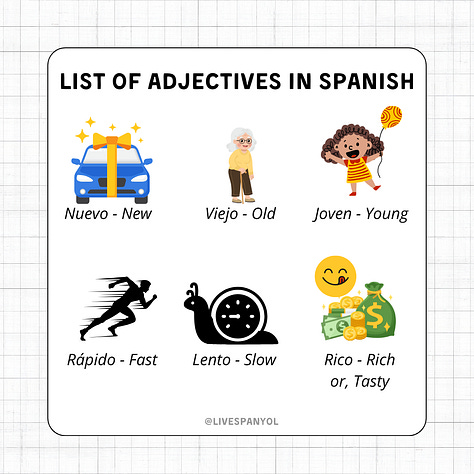

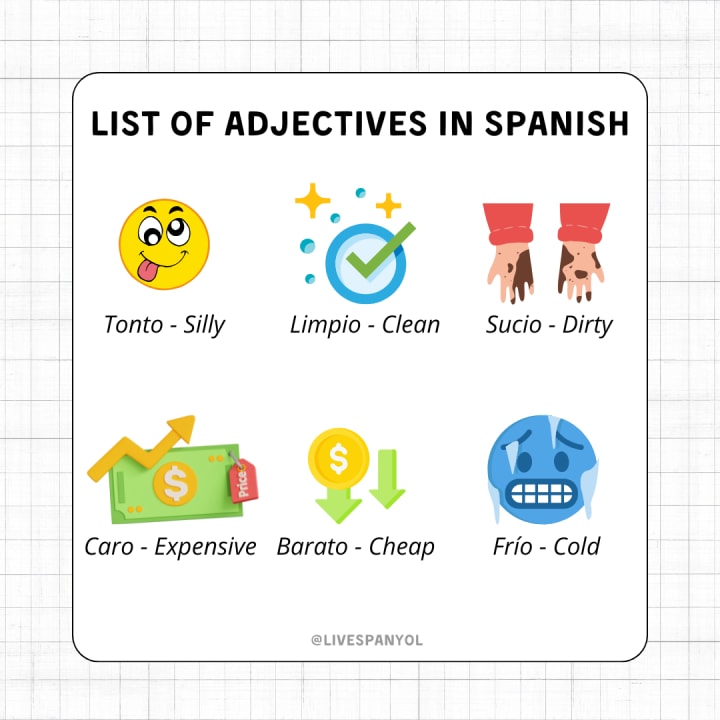
🚀 Want to Learn More?
📅 Book a 1-on-1 Spanish Lesson with me! 👉 Click here to schedule!
🎥 Subscribe to My YouTube Channel for more fun lessons! 👉 Subscribe Now!


